Time immemorial is a phrase meaning time extending beyond the reach of memory, record, or tradition, indefinitely ancient, "ancient beyond memory or record". The phrase is used in legally significant contexts as well as in common parlance.

Charles Seymour, 6th Duke of Somerset, known by the epithet "The Proud Duke", was an English aristocrat and courtier. He rebuilt Petworth House in Sussex, the ancient Percy seat inherited from his wife, in the palatial form which survives today. According to the Encyclopædia Britannica Eleventh Edition, he was a remarkably handsome man, and inordinately fond of taking a conspicuous part in court ceremonial; his vanity, which earned him the sobriquet of "the proud duke", was a byword among his contemporaries and was the subject of numerous anecdotes; Macaulay described him as "a man in whom the pride of birth and rank amounted almost to a disease".

Marlborough is a market town and civil parish in the English county of Wiltshire on the Old Bath Road, the old main road from London to Bath. The town is on the River Kennet, 24 miles (39 km) north of Salisbury and 10 miles (16 km) southeast of Swindon.
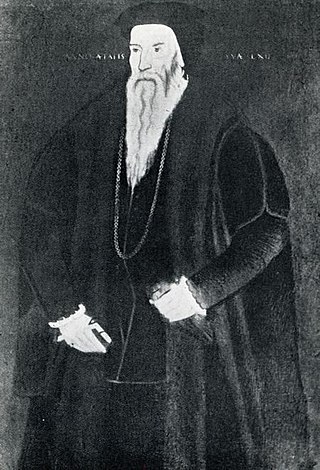
Sir John Seymour, Knight banneret was an English soldier and a courtier who served both Henry VII and Henry VIII. Born into a prominent gentry family, he is best known as the father of Henry VIII's third wife, Jane Seymour, and hence grandfather of king Edward VI of England.

Easton Royal is a village in the civil parish of Easton in Wiltshire, England, about 3 miles (5 km) east of Pewsey and 5 miles (8 km) south of Marlborough. The village was the location of Easton Priory from 1234 to 1536. The village mistakenly gained the Royal suffix in 1838 and the name Easton Royal has been in general use since the 1850s.

Wiltshire is a historic county located in the South West England region. Wiltshire is landlocked and is in the east of the region.

William Seymour, 2nd Duke of Somerset, was an English nobleman and Royalist commander in the English Civil War.

Seymour, Semel or St. Maur, is the name of an English family in which several titles of nobility have from time to time been created, and of which the Duke of Somerset is the head.

Hertford Castle was built in Norman times by the River Lea in Hertford, the county town of Hertfordshire, England. Most of the internal buildings of the castle have been demolished. The main surviving section is the Tudor gatehouse, which is a Grade I listed building. Parts of the bailey walls on the east side of the castle also still stand, and are a Grade II* listed building.

Richard William Barber FRSL FSA FRHistS is a British historian who has published several books about medieval history and literature. His book The Knight and Chivalry, about the interplay between history and literature, won the Somerset Maugham Award, a well-known British literary prize, in 1971. A similarly-themed 2004 book, The Holy Grail: Imagination and Belief, was widely praised in the UK press, and received major reviews in The New York Times and The New Republic.
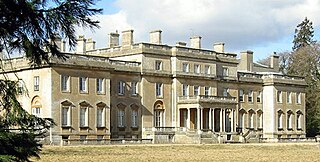
Tottenham House is a large Grade I listed English country house in the parish of Great Bedwyn, Wiltshire, about five miles southeast of the town of Marlborough. It is separated from the town by Savernake Forest, which is part of the Tottenham Park estate.
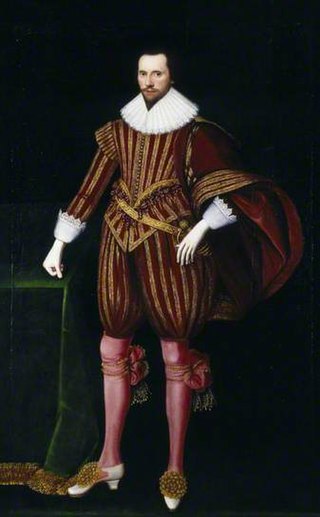
Francis Seymour, 1st Baron Seymour of Trowbridge, of Marlborough Castle and Savernake Park in Wiltshire, was an English politician who sat in the House of Commons at various times between 1621 and 1641 when he was raised to the peerage as Baron Seymour of Trowbridge. He supported the Royalist cause during the English Civil War.

Sir William Esturmy, of Wolfhall, Wiltshire was an English Knight of the Shire, Speaker of the House of Commons, and hereditary Warden of the royal forest of Savernake, Wiltshire.

William Levett, Esq., was a long serving courtier to King Charles I of England. Levett accompanied the King during his flight from Parliamentary forces, including his escape from Hampton Court palace, and eventually to his imprisonment in Carisbrooke Castle on the Isle of Wight, and finally to the scaffold on which he was executed. Following the King's death, Levett wrote a letter claiming that he had witnessed the King writing the so-called Eikon Basilike during his imprisonment, an allegation that produced a flurry of new claims about the disputed manuscript and flamed a growing movement to rehabilitate the image of the executed monarch.
Wulfhall or Wolfhall is an early 17th-century manor house in Burbage parish, Wiltshire, England. It is north-east of Burbage village, and about 5 miles (8 km) south-east of Marlborough. A previous manor house on the same site, at that time in the parish of Great Bedwyn, was the seat of the Seymour family, a member of which, Jane Seymour, was queen to King Henry VIII.

John Seymour of Wulfhall, of Stalbridge, of Stinchcombe and of Huish, all in Wiltshire, England, was warden of Savernake Forest and a prominent member of the landed gentry in the counties of Wiltshire, Somerset and Dorset. He was the grandfather of Jane Seymour, the third wife of King Henry VIII, and was thus great-grandfather of King Edward VI.
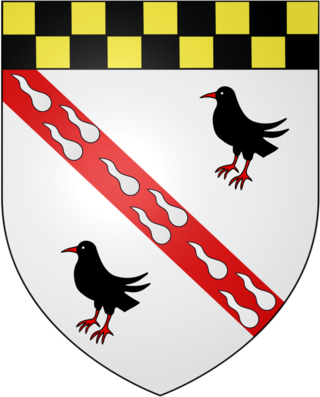
Gabriel Pleydell of Midg Hall in the parish of Lydiard St John in Wiltshire, was an English landowner and politician who served as Member of Parliament for the Wootton Bassett and Marlborough constituencies in the Parliament of England. Pleydell was born before 1519 into a large, affluent family. He entered politics in March 1553 as a member for Wootton Bassett, close to his family estate at Midgehall in Wiltshire. Pleydell's election to the Marlborough constituency two years later may have been made possible by his father's influential connections. He returned to the Wootton Bassett seat at the request of Sir John Thynne in 1563; he had supported Thynne in a dispute over the Knighthood of the Shire in 1559.

The 1821 Coronation Honours were appointments by King George IV to various orders and honours on the occasion of his coronation on 19 July 1821. The honours were published in The London Gazette on 14, 24 and 28 July 1821.
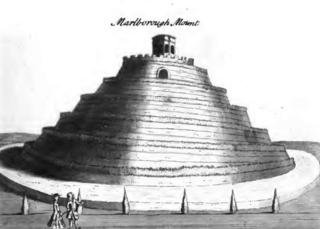
Marlborough Mound is a Neolithic monument in the town of Marlborough in the English county of Wiltshire. Standing 19 metres (60 ft) tall, it is second only to the nearby Silbury Hill in terms of height for such a monument. Modern study situates the construction date around 2400 BC. It was first listed as a Scheduled Monument in 1951.
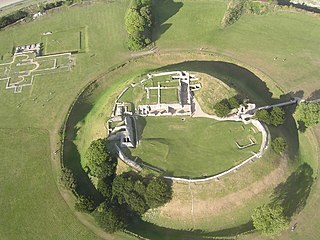
Old Sarum Castle, formerly known as Seresberi Castle, is an 11th century motte-and-bailey castle built in Old Sarum, Wiltshire. It was originally built in timber and it was eventually built in stone, of which the ruins can be seen today. Only the mound and foundations of the castle survive today. The castle is owned by the English Heritage and it is open to the public, along with the rest of Old Sarum.




















